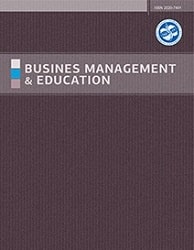MEASUREMENT OF EFFICIENCY OF DIDACTIC ACTIVITIES OF PUBLIC UNIVERSITIES OF TECHNOLOGY IN POLAND: DIRECTIONAL DISTANCE FUNCTION WITH UNDESIRABLE OUTPUT APPROACH
MEASUREMENT OF EFFICIENCY OF DIDACTIC ACTIVITIES OF PUBLIC UNIVERSITIES OF TECHNOLOGY IN POLAND: DIRECTIONAL DISTANCE FUNCTION WITH UNDESIRABLE OUTPUT APPROACH
Author(s): Łukasz Brzezicki, Robert RusielikSubject(s): Higher Education , Management and complex organizations
Published by: Vilnius Gediminas Technical University
Keywords: higher education; efficiency; DEA; DDF; undesirable output;
Summary/Abstract: Purpose – The conducted research aimed at estimating the technical efficiency of didactic activity in the group of universities of technology in Poland using the non-parametric Data Envelopment Analysis (DEA) method. Research methodology – The measurement was based on the model of directional distance function with undesirable output under variable return-to-scale and output-oriented (DDF BadOutput-V-O). Findings – The research allowed to group universities in 2010 and 2015 into three categories, i.e. efficient universities and universities above and below the average efficiency. It has been shown that it is justified to use alternative models of efficiency measurement covering different perspectives. The application of the model from a financial and employment perspective showed significant differences in performance levels in some cases. Research limitations – This study only looks at universities of technology, so the future study should be extended to other universities and compare efficiency of higher education with the level of study effectiveness (dropout rate education, graduation rates). Practical implications – The use of the DDF model with undesirable output allowed to obtain results closer to the actual conditions of teaching in public universities than in the case of using classic DEA models, wich only take the desired output into account. Originality/Value – The originality of the work lies in the use of a more general and flexible DDF approach than the classical DEA models, which made it possible to estimate the efficiency of universities taking into account the desirable (positive) and undesirable (negative) output.
Journal: Business, Management and Education
- Issue Year: 18/2020
- Issue No: 1
- Page Range: 73-87
- Page Count: 15
- Language: English

